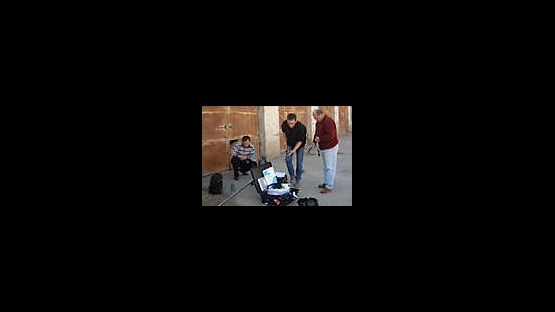Radiation sources located in Kabul have been secured with the assistance of IAEA experts, the UN's International Security Assistance Force (ISAF), and UN authorities working with the interim government in Afghanistan. The sources - once used for medical and research applications - were found in Kabul in late March during UN environmental monitoring missions of sites damaged or destroyed during the country's decades of civil conflicts. One powerful radiation source - containing cobalt-60 and part of an old radiotherapy machine -- was secured within days of its detection inside buildings of a former hospital in Kabul. The safe storage of several smaller and far weaker radiation sources, which were recovered at inactive university laboratories, is being completed this week.
"The major concern was the cobalt source," said Mr. Khammar Mrabit, head of the IAEA's Radiation Monitoring and Protection Services Section. "Fortunately the radiotherapy machine was in tact. Measurements taken showed low levels of radiation, indicating that the cobalt source was in its shielded position and undamaged."
 Mr. Mrabit headed an IAEA team of three radiation safety experts who visited Kabul from 25-28 March to help authorities assess the radiological situation and safely store the sources. The Agency's Director General Mohamed ElBaradei sent the team at the request of the Afghan Interim Administration and the UN Special Mission to Afghanistan (UNSMA). The sources were found by a unit of ISAF conducting nuclear, biological, and chemical monitoring in Afghanistan.
Mr. Mrabit headed an IAEA team of three radiation safety experts who visited Kabul from 25-28 March to help authorities assess the radiological situation and safely store the sources. The Agency's Director General Mohamed ElBaradei sent the team at the request of the Afghan Interim Administration and the UN Special Mission to Afghanistan (UNSMA). The sources were found by a unit of ISAF conducting nuclear, biological, and chemical monitoring in Afghanistan.
Cobalt-60 is a metallic radioactive element that emits gamma rays as it decays, losing half of its radioactivity every 5.27 years. It is used in radiotherapy for cancer treatment, as well as for other applications in industry and research. Based on information the team received from Afghan authorities, the cobalt source in Kabul was supplied by the former Soviet Union and placed into operation at the hospital in the late 1970s.
The cobalt source was found in an abandoned wing of the former hospital, contained inside a room built with thick, concrete and lead-lined walls. Other smaller radiation sources, mainly for research activities, also were found stored at a different site that used to be part of physics and nuclear science laboratories now closed at the University of Kabul.
During its mission, the IAEA team checked and measured the dose rates of the radiation sources and advised authorities on their safe storage and physical security. Meetings with Afghan and UN officials also focused on follow-up actions. These include steps that the Afghan authorities could take to upgrade the national infrastructure for radiation and waste safety, particularly with respect to the search, recovery, documentation, and storage of radiation sources and IAEA assistance.
Among its range of activities, the IAEA carries out regional technical cooperation projects that presently assist more than 80 countries to improve their national programmes for radiation and waste safety. The Agency also operates an Emergency Response Center in connection with its role under the international Convention on Assistance in the Case of a Nuclear Accident or Radiological Emergency. In mid-March, as part of efforts to strengthen protection against nuclear terrorism, the IAEA Board of Governors approved an action plan to reinforce programmes that, among other objectives, help countries upgrade their emergency response capabilities and put into place measures for preventing radiation sources from potentially falling into the wrong hands.


